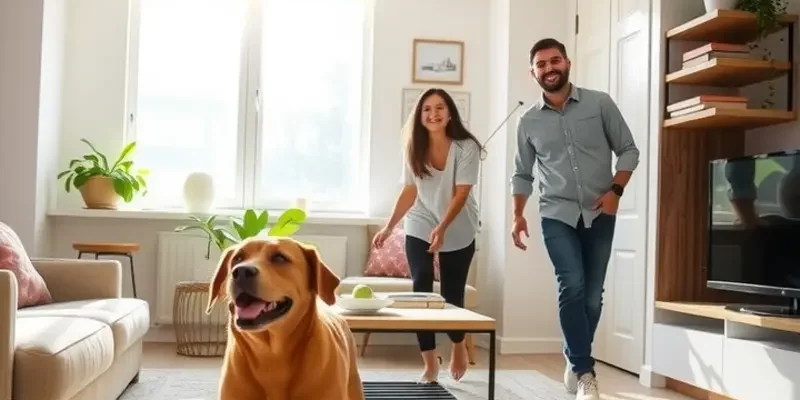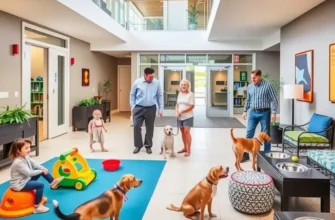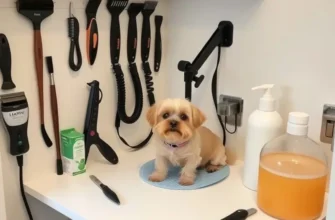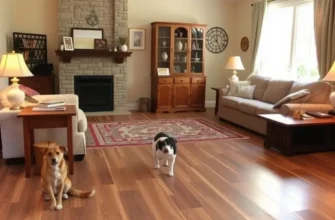Finding the perfect apartment can be tricky, especially when you have active dogs in tow. For families, couples, and renters, ensuring that your living space is accommodating for both pets and children is essential for a harmonious home. Apartment living can, indeed, be successful with dogs, provided you choose with care, prepare your new home, and adapt your routine. Here, we’ll explore practical tips and essential advice on how to enjoy apartment living while ensuring that your active dogs thrive. With a little forethought and creativity, you’ll find that your apartment can become a happy sanctuary for everyone – pets and people alike! From selecting the right space to establishing a daily routine, this guide will cover all the fundamentals you need to make your apartment feel like home.
Choosing the Right Apartment
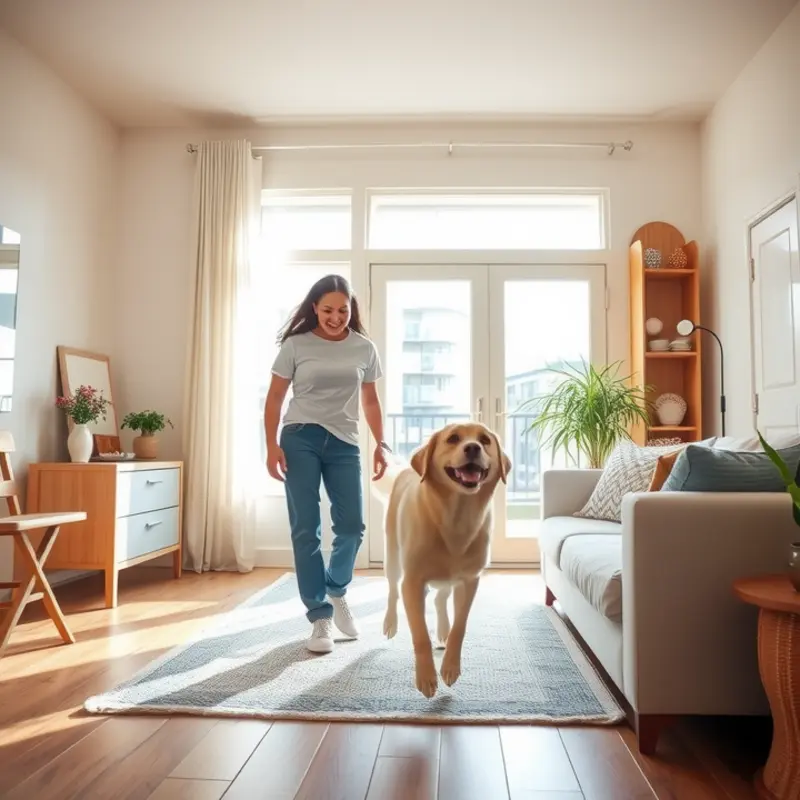
Finding the right apartment for you and your active dogs begins with understanding both your needs. Start by evaluating the size and layout of potential apartments. Space is crucial when living with energetic pets. Look for an open floor plan that allows your dogs to move freely without constant obstruction. Consider the number of rooms, as a layout with distinct areas can help manage noise and space.
Next, check for pet policies. It’s vital to understand any restrictions related to size, breed, or number of pets. Many apartments have specific guidelines, and being aware of these from the start saves you from future inconveniences. Ask about additional fees or deposits required for having pets and ensure they fit within your budget.
Access to outdoor space is another essential factor. While having a balcony or a patio is beneficial, having access to a nearby park or walking trail is even more valuable for active dogs. This not only provides an excellent outlet for exercise but also adds variety to their routine. Additionally, evaluate the apartment’s walkability score, which indicates how friendly an area is to pedestrians. A higher score often suggests more walkable areas and nearby amenities. For more guidance on understanding walkability scores, visit this walkability score guide.
Consider the flooring. Floors such as hardwood or tile are easier to clean and maintain compared to carpet, especially with pets who shed. Moreover, these types of flooring are less prone to damage. Noise can also be a concern; thicker carpets might help to absorb sounds of active dogs, keeping neighbors happy.
Evaluate available storage options. Having sufficient space to store pet supplies, toys, and food is important to maintain order and cleanliness. Think about how you can organize these in a way that maximizes space and keeps the apartment looking tidy.
Think about the neighborhood. A community with a high concentration of pet owners might offer more amenities tailored to pet needs, like pet-friendly cafes or social events. This sort of environment also tends to foster a supportive community, helpful for both humans and pets.
Finally, ensure the apartment complex has safety measures for pets. This includes secure balconies and windows, as well as stairways and elevators designed to accommodate pets. Such features can make a significant difference in the overall safety and comfort of your living space.
By carefully considering these aspects, you can find an apartment that keeps both you and your four-legged friends content and comfortable. This step is foundational in ensuring a happy coexistence in a shared, small space.
Creating a Comfortable Home for Your Pets
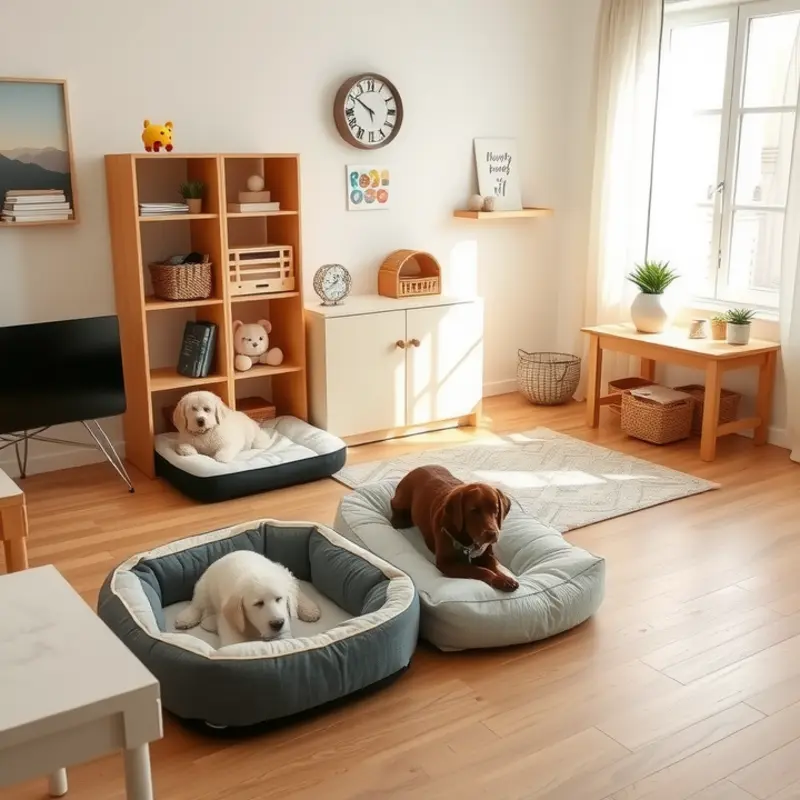
Turning your apartment into a cozy, secure space for your dogs involves thoughtful planning and adjustments. Prioritize pet-proofing to prevent accidents and protect your beloved companions from harm. Dogs are naturally curious and explore with their noses and mouths. Hence, ensuring dangerous items are out of reach is crucial.
Start by safeguarding your living area. Secure any loose cables and chords, as these can pose strangulation risks or cause electrical shocks if chewed. Use furniture to block access to outlets if necessary. Consider using a window safety film to keep windows safe when they embark on a barking spree while looking outside. For more on securing windows, you can check this guide.
Avoid leaving cleaning supplies within easy reach. Dogs often find ways into low cabinets; ensure these are locked or use childproof latches. Opt for pet-safe houseplants, avoiding toxic varieties that could lead to poisoning if ingested. It’s worth investing a little extra time in researching which plants are safe and adjusting your decor accordingly.
To create a comfortable environment, consider setting up a designated dog zone. This area can include a bed, water bowls, and their favorite toys. Such spaces provide a sense of security for your dogs and reduce stress, especially if you work from home and need uninterrupted work hours. A calm corner with a gently padded bed can also promote relaxation after walks or playtime.
Speaking of playtime, maximizing indoor play is pivotal in maintaining their happiness. In tighter spaces, find creative ways to engage your dogs physically and mentally. Interactive toys can channel their energy positively, while brief sessions of training can enhance their mental stimulation. Incorporate short daily routines into their schedule to build structure. Consistency helps dogs feel comfortable and settled in their environment.
Remember, walking routines are as vital as indoor activities. Daily walks should be regular, adapting to their energy levels and age requirements. A well-exercised dog is less likely to engage in destructive behavior and will be healthier overall. Integrate social interactions by visiting dog-friendly parks or connecting with local pet communities. It aids in building their social skills and strengthens your bond with them.
Finally, be mindful of noise levels. Dogs are sensitive to sound, and sudden loud noises can be very distressing. For those apartments with thin walls, consider soundproofing options that don’t require structural changes. These steps can make living in a shared space more enjoyable for your dogs and help create a harmonious living environment.
By focusing on these elements, you’ll establish a nurturing and secure home for your dogs, ensuring their well-being and happiness in your apartment.
Final words
Apartment living can be fun and fulfilling for families and their active dogs when equipped with the right knowledge and tools. Every space can be transformed into a vibrant home that caters to both pets and children by carefully selecting your apartment and modifying your living space. With thoughtful planning and creative adaptations, your apartment can be a haven where both your two-legged and four-legged family members thrive. Ultimately, the joy, love, and laughs brought by your dogs can turn your apartment into a cherished family hub.

